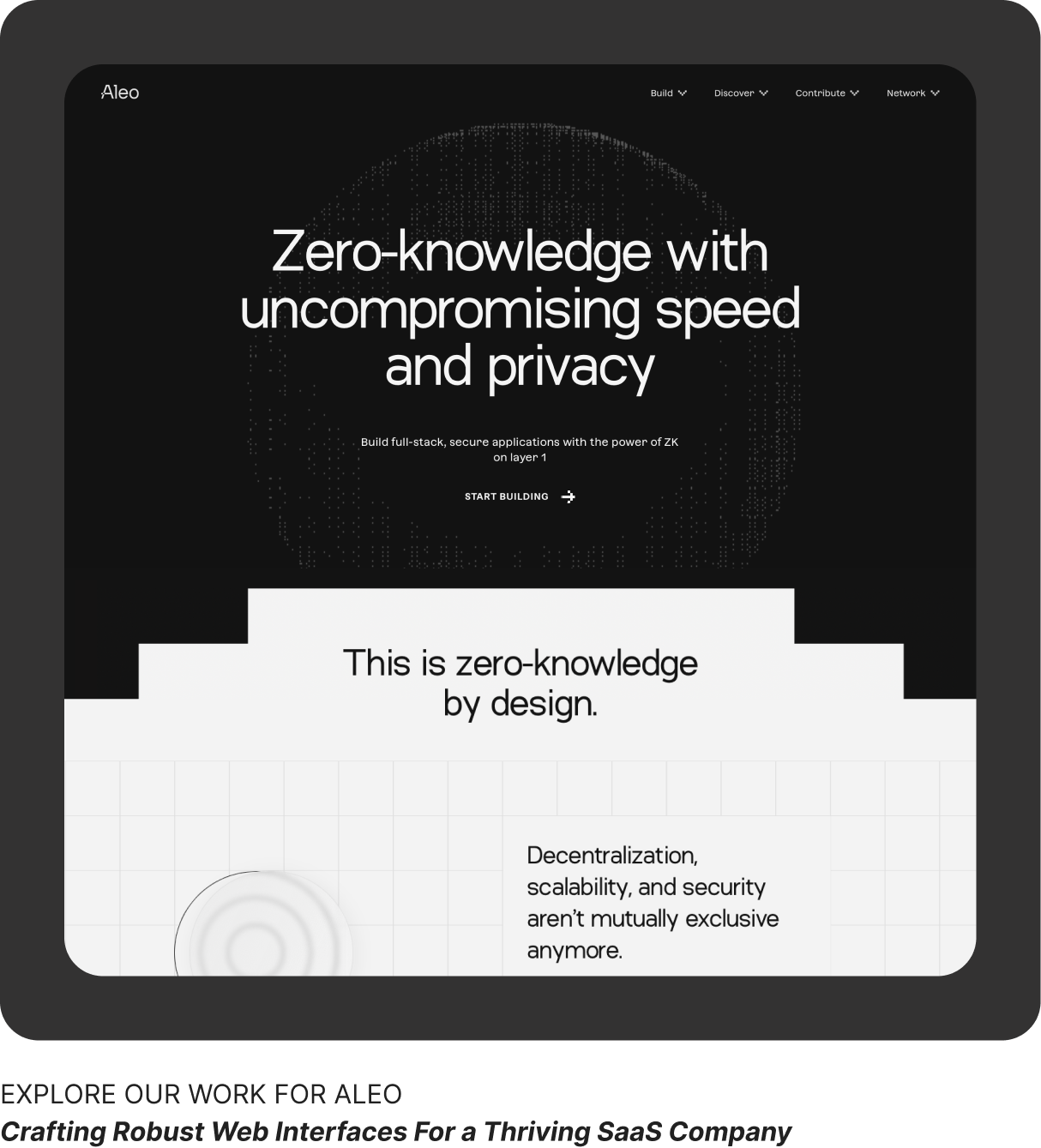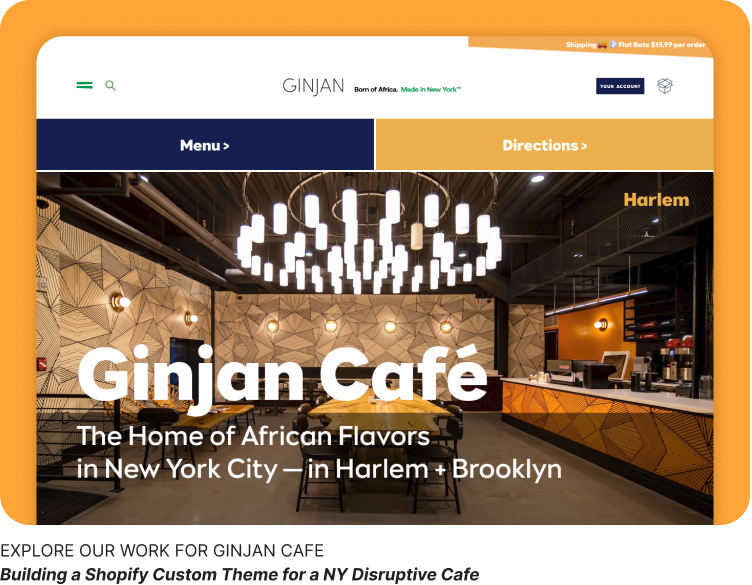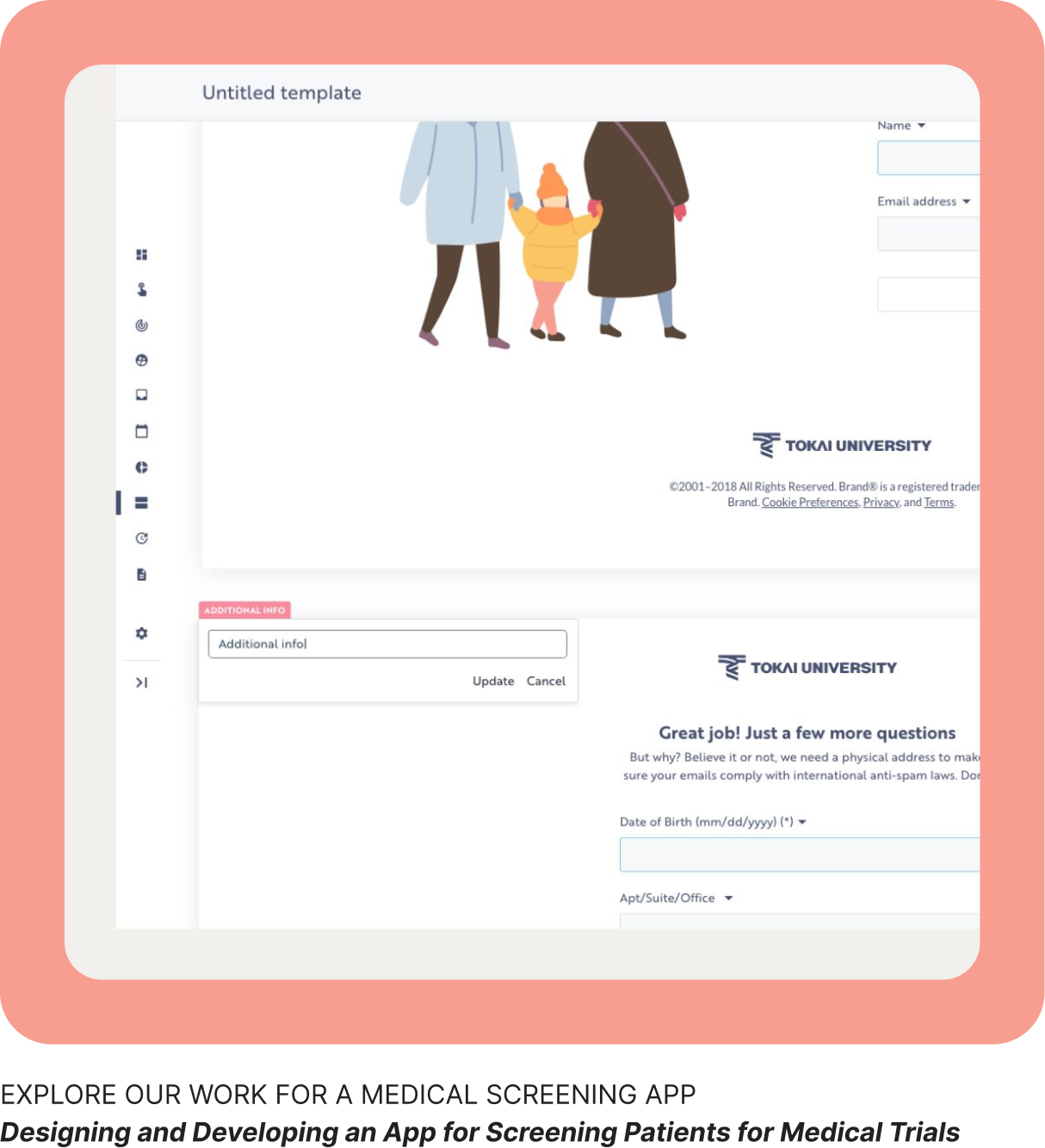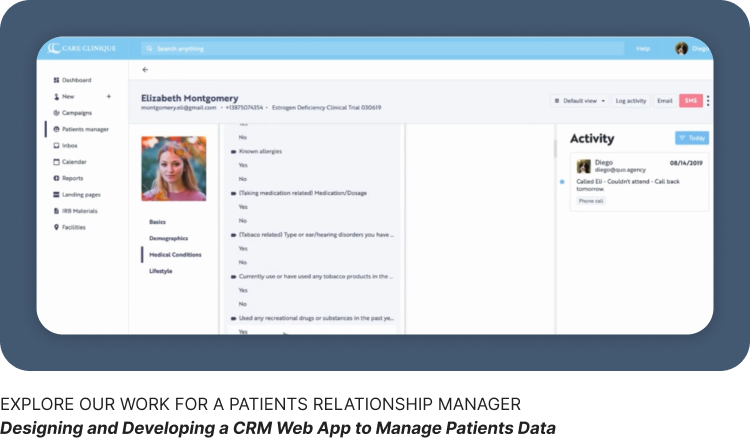Websites, SEO & Apps
Websites


Beyond just a digital brochure, corporate and informational websites serve as the central hub for businesses and organizations to communicate their brand story, showcase their offerings, and engage with their target audience. These websites are designed to be informative, user-friendly, and visually appealing, leaving a lasting impression on visitors.
Services Involved in Creating Them:
-
Web Design & Development: This encompasses the entire process of creating the website's structure, layout, and functionality. It includes:
- UX/UI Design: Crafting intuitive navigation, user-friendly interfaces, and visually appealing layouts.
- Front-End Development: Coding the website's visual elements and interactive features using HTML, CSS,and JavaScript.
- Back-End Development: Building the server-side logic and database interactions that power the website's functionality.
- Content Management System (CMS) Integration: Implementing and customizing a CMS like Webflow,HubSpot, or Prismic to enable easy content updates.
-
Content Creation & Strategy: Developing high-quality, informative, and engaging content that aligns with the website's purpose and target audience. This includes:
- Copywriting: Crafting clear and compelling website copy, headlines, and calls to action.
- Content Strategy: Planning and organizing content to ensure it's relevant, valuable, and optimized for search engines.
-
Search Engine Optimization (SEO): Optimizing the website's structure and content to improve its visibility in search engine results, driving organic traffic.
Industries That Benefit from These Websites:
- Virtually any industry can benefit from a well-crafted corporate or informational website. Some common examples include:
- Technology & SaaS
- Healthcare & Pharmaceuticals
- Financial Services
- Manufacturing & Industrial
- Professional Services (Law, Consulting, etc.)
- Education & Non-profits
- Real Estate & Construction
- Hospitality & Tourism
In essence, any organization that wants to establish a strong online presence, communicate its brand message effectively,and engage with its target audience can benefit from a professionally designed and developed corporate or informational website.
Landing pages are the sharp point of your marketing spear, designed to capture attention, deliver a compelling message, and drive conversions. Unlike traditional web pages with multiple navigation options, landing pages eliminate distractions and focus visitors on a specific action, such as signing up for a newsletter, downloading an e-book, or making a purchase.
Creating high-converting landing pages requires a blend of creative and technical expertise. Here are the key talents involved:
Web Designers: Crafting visually appealing and user-friendly layouts that guide visitors towards the desired action.
Copywriting: Develop persuasive and concise messaging that clearly communicates the value proposition and encourages conversions.
UX/UI Designers: Optimize the user experience, ensuring seamless navigation and intuitive interactions.
Front-End Developers: Bring the design to life with clean and efficient code, ensuring optimal performance and responsiveness across devices.
Let's explore the unique aspects of "A la Apple" landing pages and their relevance across industries.
Services Involved (Beyond Standard Landing Page Creation):
- Interactive Design & Development: Creating engaging on-scroll experiences, animations, and micro-interactions that captivate users and guide them through the page's narrative.
- Storytelling & Content Strategy: Crafting a compelling brand story that resonates with the target audience and evokes an emotional connection.
- High-Fidelity Visual Design: Producing visually stunning graphics, animations, and imagery that align with the brand's aesthetic and create a premium feel.
- User Experience (UX) Optimization: Meticulously refining the user journey to ensure seamless navigation,intuitive interactions, and a delightful browsing experience.
The Point of Creating "A la Apple" Landing Pages:
- Create a Memorable Brand Experience: These pages go beyond simple information delivery; they immerse visitors in a brand's world, leaving a lasting impression.
- Showcase Product or Service Innovation: Highlight the unique features and benefits of a product or service through interactive demonstrations and captivating visuals.
- Drive Emotional Engagement: Storytelling and interactive elements evoke emotions, fostering a deeper connection with the brand and increasing the likelihood of conversions.
- Differentiate from Competitors: Stand out in a crowded market with a visually striking and engaging landing page that captures attention and inspires action.
Industries Where They Make Sense:
- Technology & Consumer Electronics: Showcase product innovation and create a sense of excitement around new launches.
- Luxury Brands & Fashion: Emphasize brand storytelling, craftsmanship, and exclusivity through high-quality visuals and immersive experiences.
- Creative Agencies & Design Studios: Demonstrate creative capabilities and showcase a portfolio of work in an interactive and engaging format.
- Startups & Innovative Companies: Capture attention and generate buzz around a new product or service launch.
- Any industry seeking to create a premium brand experience and differentiate itself through storytelling and innovation.
In essence, "A la Apple" landing pages are ideal for brands that want to make a bold statement, tell a captivating story,and create a lasting impression on their audience. They're particularly effective for showcasing innovative products or services and building emotional connections with potential customers.
A break down of the CRO process into a few key steps will involve:
-
Analyze: Gather data on how users interact with your website or landing page. This includes tracking metrics like bounce rates, click-through rates, and conversion rates. Tools like Google Analytics and heatmaps can provide valuable insights.
-
Identify: Pinpoint areas of friction or drop-off in the user journey. Where are people leaving your site? What's preventing them from taking the desired action?
-
Hypothesize: Develop data-backed hypotheses about why users aren't converting. These could involve issues with design, messaging, calls to action, or the overall user experience.
-
Test: Implement changes based on your hypotheses and conduct A/B testing to compare the performance of different variations. This could involve testing different headlines, button colors, page layouts, or even entirely new design concepts.
-
Iterate: Analyze the results of your tests and make data-driven decisions about which changes to keep and which to discard. Continuously refine your website or landing page based on user behavior and feedback.
When it comes to CMS integration, choosing the right platform is critical. Each has its strengths and aligns with different client needs and scenarios.
Webflow: This platform shines for its visual design capabilities and ease of use. It's a great fit for businesses that prioritize design flexibility and want to empower their marketing teams to make updates without extensive coding knowledge. However, its capabilities can be limited for complex enterprise-level projects that require extensive customization or integration with other systems.
HubSpot CMS: This option is ideal for businesses already invested in the HubSpot ecosystem or those seeking a powerful all-in-one marketing and CRM solution. It offers a user-friendly interface, robust features, and seamless integration with other HubSpot tools. While it can handle enterprise-level projects, its strength lies in its marketing automation and personalization capabilities.
Headless CMS (Prismic, Sanity, Strapi): These platforms offer unparalleled flexibility and customization for complex,enterprise-level projects. They decouple the content management backend from the presentation layer, giving developers complete control over the front-end experience and allowing for integration with any technology stack. However, they require a higher level of technical expertise and may not be the most intuitive option for non-technical users.
In summary:
- Webflow: Best for design-focused businesses seeking a user-friendly platform with visual editing capabilities.
- HubSpot CMS: Ideal for businesses using HubSpot's marketing and CRM tools or those prioritizing personalization and automation.
- Headless CMS: Perfect for large enterprises or projects requiring maximum flexibility, customization, and integration with diverse technologies.
Ultimately, the best choice depends on each client's specific needs, technical capabilities, and long-term goals. Quo Agency's expertise in all three options allows us to recommend and implement the ideal solution for every project.
Shopify Development
-
What it is: Shopify is a leading cloud-based eCommerce platform that empowers businesses to create and manage their online stores with ease. It offers a user-friendly interface, a vast app store for added functionality, and a wide range of customizable themes.
-
Talent & Expertise: Shopify development involves leveraging the platform's features and APIs to build and customize online stores. This includes:
- Theme Development & Customization: Creating visually appealing and functional storefronts using Shopify's templating language (Liquid) and CSS.
- App Integration: Extending the platform's capabilities by integrating various apps from the Shopify App Store.
- Custom Functionality Development: Building bespoke features and functionalities to meet unique business requirements.
- Payment & Shipping Integration: Setting up secure payment gateways and configuring shipping options.
- Ongoing Maintenance & Support: Providing technical assistance and updates to ensure the store runs smoothly.
-
Theme Development vs. Headless:
- Theme Development: Involves working within the confines of Shopify's theme structure, customizing pre-built templates or creating new ones from scratch. This approach is generally faster and more cost-effective for businesses with standard eCommerce needs.
- Headless Commerce: Decouples the front-end presentation layer from the back-end eCommerce functionality, allowing for greater flexibility and customization. This approach is ideal for businesses with complex requirements or those seeking a highly unique and personalized storefront experience.
BigCommerce Development
-
What it is: BigCommerce is another popular cloud-based eCommerce platform known for its robust features,scalability, and enterprise-level capabilities. It offers a wide range of built-in features, extensive API support, and the ability to handle large product catalogs and high traffic volumes.
-
Talent & Expertise: BigCommerce development involves leveraging the platform's features and APIs to build and customize online stores. This includes:
- Theme Development & Customization: Creating visually appealing and functional storefronts using BigCommerce's Stencil theme framework and Handlebars templating language.
- App Integration: Extending the platform's capabilities by integrating various apps from the BigCommerce App Marketplace.
- Custom Functionality Development: Building bespoke features and functionalities to meet unique business requirements.
- Payment & Shipping Integration: Setting up secure payment gateways and configuring shipping options.
- Ongoing Maintenance & Support: Providing technical assistance and updates to ensure the store runs smoothly.
-
Theme Development vs. Headless:
- Theme Development: Involves working within the confines of BigCommerce's theme structure, customizing pre-built templates or creating new ones from scratch. This approach is suitable for businesses seeking a balance of functionality and customization.
- Headless Commerce: Similar to Shopify, headless commerce on BigCommerce allows for greater flexibility and customization by separating the front-end and back-end. This approach is ideal for businesses with complex requirements or those seeking a highly unique and personalized storefront experience.
Choosing the Right Platform:
The choice between Shopify and BigCommerce, as well as the decision to go headless, depends on various factors,including:
- Business Size & Complexity: Shopify is often favored by small to medium-sized businesses, while BigCommerce is popular among larger enterprises with more complex needs.
- Customization Requirements: Headless commerce offers the most flexibility for customization, but it also requires more technical expertise and development time.
- Budget: Shopify tends to be more budget-friendly for smaller businesses, while BigCommerce may have higher upfront costs but offers more scalability for growing businesses.
- Specific Features & Integrations: Consider the specific features and integrations required for your business and choose the platform that best supports them.
Search Engine Optimization (SEO)

On-Page Optimization is primarily concerned with optimizing the content and structure of individual web pages to make them more search engine-friendly.
How it helps with SEO:
- Relevance: Search engines want to show users the most relevant results for their queries. On-page optimization ensures your content aligns with search intent by using relevant keywords and providing valuable information.
- User Experience: Search engines also prioritize websites that offer a good user experience. On-page optimization improves factors like page load speed, mobile-friendliness, and clear navigation, making it easier for users to find what they're looking for.
- Crawlability & Indexability: Search engines need to be able to crawl and index your website's content to understand what it's about. On-page optimization ensures your site's structure and code are clean and easy for search engine bots to navigate.
On-Page Optimization, on the other hand, focuses on optimizing individual web pages for search engines. This includes:
-
Keyword Placement: Strategically incorporating target keywords into page titles, headings, meta descriptions, and image alt tags.
-
Content Structure & Formatting: Organizing content with clear headings, subheadings, and bullet points to improve readability and search engine understanding.
-
Internal Linking: Strategically linking between relevant pages within your website to improve user navigation and distribute link equity.
-
Meta Tags Optimization: Crafting compelling meta titles and descriptions that accurately summarize your content and entice users to click.
Technical SEO Audits and Fixes focuses on the technical aspects of your website that can impact its search engine visibility. This includes:
-
Website Speed Optimization: Improving page load times to enhance user experience and search rankings.
-
Mobile-Friendliness: Ensuring your website is optimized for viewing and navigation on mobile devices.
-
Crawlability & Indexability: Addressing issues that prevent search engine bots from accessing and indexing your website's content.
-
Site Architecture: Optimizing your website's structure and internal linking for better navigation and search engine understanding.
-
Structured Data Implementation: Adding structured data markup to your website's code to help search engines better understand your content and display it in rich results.
-
XML Sitemap Creation & Submission: Creating and submitting an XML sitemap to search engines to help them discover and index your pages.
-
Security & HTTPS: Ensuring your website is secure and uses HTTPS encryption to protect user data and improve search rankings.
Content Optimization Strategies delve deeper into the strategic planning and execution of content creation to achieve specific marketing and SEO goals. It involves:
-
Keyword Research & Strategy: Identifying high-value keywords and search terms that align with your target audience and business objectives.
-
Content Planning & Creation: Developing a content calendar and creating high-quality, informative, and engaging content that resonates with your audience and satisfies search intent.
-
Content Augmentation: Repurposing and enhancing existing content, such as podcasts and long-form conversations, to maximize its reach and impact.
-
Content Promotion & Distribution: Strategically promoting and distributing content across various channels to reach a wider audience and attract backlinks.
It's the digital equivalent of word-of-mouth marketing, where other websites vouch for the quality and relevance of your content by linking back to it.
Here's a breakdown of what it includes:
-
Link Building: This involves strategically acquiring backlinks (incoming links) from other websites to your own.It's like earning votes of confidence from other reputable sources on the internet. These backlinks act as signals to search engines, indicating that your website is trustworthy and valuable.
-
Off-Page SEO: This encompasses a broader range of activities aimed at improving your website's authority and reputation outside of your own domain. It includes:
- Social Media Engagement: Building a strong presence on social media platforms, encouraging shares and interactions that can indirectly influence your website's visibility.
- Brand Mentions & Citations: Getting your brand mentioned or cited on other websites, blogs, or online directories, even without a direct link.
- Content Marketing & PR: Creating and promoting high-quality content that attracts natural backlinks and generates buzz around your brand.
- Influencer Marketing: Partnering with influencers in your industry to reach a wider audience and earn valuable backlinks.
The core objective of Link Building & Off-Page SEO is to increase your website's authority and trustworthiness in the eyes of search engines. This leads to higher rankings in search results, increased organic traffic, and ultimately, more leads and conversions for your business.
Web Applications & Technical Solutions
While the "Websites" category focuses on the core structure and design of websites, "Web Applications & Technical Solutions" delves deeper into the specialized functionalities and integrations that enhance those websites.


The development of custom web applications typically involves a multi-stage process that ensures the final product aligns with the client's needs and expectations. While the specifics can vary depending on the project's complexity and scope,here's a common process Quo Agency could follow:
-
Discovery & Requirements Gathering: This initial phase involves in-depth discussions with the client to understand their business objectives, target audience, desired features, and technical constraints. This information is crucial for defining the project scope and creating a detailed project plan.
-
Design & Prototyping: Once the requirements are clear, the design team creates wireframes and prototypes to visualize the application's structure, layout, and user flow. This allows for early feedback and ensures everyone is aligned on the overall vision.
-
Development: The development team then brings the design to life, coding the front-end and back-end functionalities of the application. This involves choosing the appropriate technologies, frameworks, and programming languages to ensure optimal performance and scalability.
-
Testing & Quality Assurance: Rigorous testing is conducted throughout the development process to identify and fix any bugs or issues. This ensures the application functions as intended and provides a seamless user experience.
-
Deployment & Launch: Once the application has been thoroughly tested, it's deployed to a production environment and made available to users.
-
Maintenance & Support: Ongoing maintenance and support are provided to address any issues that may arise,implement updates, and ensure the application continues to meet the client's evolving needs.
Throughout the process, Quo Agency maintains open communication with the client, providing regular updates and seeking feedback to ensure the project stays on track and aligns with their vision.
API integrations play a crucial role in streamlining marketing efforts and enhancing data-driven decision-making for companies. Here are some common scenarios where API integrations prove invaluable:
Inventory Management: Integrating with inventory management systems allows for real-time synchronization of stock levels across various sales channels, preventing overselling and ensuring accurate product availability information for customers.
Order Management & Fulfillment: Integrating with order management and fulfillment systems streamlines the process of receiving, processing, and shipping orders, improving efficiency and reducing errors.
Shipping & Logistics: Integrating with shipping carriers and logistics providers enables automated shipping label generation, real-time tracking updates, and efficient delivery management.
Payment Gateways: Integrating with multiple payment gateways offers customers a variety of payment options,increasing convenience and improving conversion rates.
Customer Relationship Management (CRM): Integrating with CRM systems allows for centralized customer data management, enabling personalized marketing campaigns, targeted promotions, and improved customer service.
Marketing Automation: Integrating with marketing automation platforms enables automated email campaigns,abandoned cart recovery, and personalized product recommendations, driving customer engagement and boosting sales.
Analytics & Reporting: Integrating with analytics tools provides valuable insights into sales data, customer behavior,and marketing campaign performance, enabling data-driven decision-making and optimization.
Social Media & Marketplaces: Integrating with social media platforms and online marketplaces expands product reach and enables seamless selling across multiple channels.
PayPal and Stripe are two of the most popular and widely used payment gateways. Aside from these, there are also:
Square: A great choice for businesses with a physical presence, as it offers seamless integration with their point-of-sale systems.
Authorize.Net: A well-established and reliable payment gateway, often favored by larger enterprises.
Braintree: A PayPal-owned gateway known for its developer-friendly APIs and global reach.
Adyen: A comprehensive payments platform that supports various payment methods and currencies, ideal for businesses with international customers.
Beyond driver's license and credit score verification, here are some other common scenarios where fraud prevention and financial integrations are sought after, particularly within the context of Quo Agency's services and its target market of busy marketing teams:
-
Enhanced Identity Verification:
- Multi-Factor Authentication (MFA): Adding layers of security beyond passwords, such as one-time codes sent to mobile devices or biometric authentication.
- Knowledge-Based Authentication (KBA): Asking users questions based on their personal information to verify their identity.
- Document Verification: Verifying the authenticity of uploaded documents like passports or utility bills using AI and machine learning.
-
Risk Assessment & Scoring:
- Transaction Monitoring: Analyzing transaction patterns and user behavior to identify suspicious activity in real-time.
- Device Fingerprinting: Identifying and tracking devices used to access a website or application, helping to detect fraudulent behavior.
- Velocity Checks: Monitoring the frequency and volume of transactions to identify unusual patterns that may indicate fraud.
-
Chargeback & Dispute Management:
- Automated Dispute Resolution: Integrating with chargeback management systems to streamline the process of responding to and resolving disputes.
- Chargeback Prevention Tools: Implementing tools to identify and address potential chargeback triggers,such as incorrect billing information or product descriptions.
-
Compliance & Regulatory Requirements:
- Anti-Money Laundering (AML) Checks: Screening customers and transactions against AML watchlists and databases.
- Know Your Customer (KYC) Verification: Collecting and verifying customer information to comply with KYC regulations.
- GDPR & Data Privacy Compliance: Ensuring that data collection and processing practices adhere to relevant privacy regulations.
-
Additional Use Cases:
- Account Takeover Protection: Implementing measures to prevent unauthorized access to user accounts.
- Payment Fraud Detection: Identifying and preventing fraudulent transactions using machine learning algorithms and risk scoring.
- Subscription Management & Billing: Integrating with billing systems to automate recurring payments and manage subscription plans.
These integrations can be particularly valuable for eCommerce businesses, SaaS platforms, and any organization that handles sensitive customer data or financial transactions. By implementing robust fraud prevention and financial integrations, businesses can protect themselves and their customers from fraudulent activity, build trust, and ensure a secure and seamless online experience.
The process of Salesforce API integration can vary depending on several factors, including the specific integration requirements, the complexity of the data being exchanged, and the existing technology stack of the client's website or application. However, here's a general overview of the process:
-
Requirements Gathering and Planning:
- Clearly define the integration goals and objectives. What data needs to be exchanged between Salesforce and the website/application? What specific Salesforce objects and fields are involved? What are the desired workflows and automations?
- Identify the appropriate Salesforce APIs to use. Salesforce offers a variety of APIs, including REST API,SOAP API, Bulk API, and Streaming API, each with its own strengths and use cases.
- Choose the integration method. This could involve direct API calls, using a middleware platform, or leveraging pre-built connectors or plugins.
- Develop a detailed integration plan, outlining the data mapping, authentication mechanisms, error handling,and testing procedures.
-
Development and Configuration:
- Set up the necessary authentication and authorization mechanisms to securely access the Salesforce API.
- Write the code to interact with the Salesforce API, using the chosen programming language and integration method.
- Map the data between Salesforce and the website/application, ensuring data consistency and accuracy.
- Configure any necessary workflows or automations within Salesforce to trigger actions based on data exchanged with the website/application.
-
Testing and Quality Assurance:
- Thoroughly test the integration to ensure data is flowing correctly and all functionalities are working as expected.
- Test various scenarios, including error handling and edge cases, to ensure the integration is robust and reliable.
- Conduct user acceptance testing (UAT) to validate the integration from the end-user perspective.
-
Deployment and Monitoring:
- Deploy the integration to a production environment.
- Monitor the integration closely to identify any issues or performance bottlenecks.
- Implement logging and error tracking mechanisms to proactively address any problems.
Factors influencing the integration process:
- CMS: The choice of CMS can impact the integration process, as some CMS platforms may have built-in connectors or plugins for Salesforce, while others may require custom development.
- Integration Type: The specific type of integration, such as lead syncing, contact updates, or e-commerce data synchronization, will influence the complexity and scope of the project.
- Data Volume & Complexity: The volume and complexity of the data being exchanged can impact the integration's performance and require additional considerations for data mapping and transformation.
- Customization Requirements: If the integration requires custom workflows or automations within Salesforce, the process may involve additional configuration and development.
Overall, Salesforce API integration is a powerful way to streamline marketing and sales processes, improve data accuracy,and enhance customer experiences. By understanding the key steps and factors involved, Quo Agency can effectively implement these integrations and deliver value to clients seeking to leverage the full potential of Salesforce.
By incorporating features like conditional logic, dynamic fields, and progress indicators, these forms can effectively guide users through the onboarding process while collecting valuable data for lead nurturing and segmentation.
-
Support: Providing ongoing technical assistance to address any issues or bugs that may arise after the web application's launch. This could involve troubleshooting errors, answering user questions, and providing guidance on how to use the application effectively.
-
QA (Quality Assurance): Conducting thorough testing of the web application throughout the development process and post-launch to identify and rectify any defects or performance issues. This ensures the application functions as intended, delivers a seamless user experience, and meets the client's quality standards.
In addition to these core services, other areas within the "Web Applications & Technical Solutions" category can also contribute to maintaining a web app's functionality:
-
API Integrations: Ensuring that integrations with external services and platforms remain functional and up-to-date.
-
Payment Gateways Integrations: Monitoring and maintaining payment gateway integrations to ensure secure and seamless transactions.
-
Fraud Prevention & Financial Integrations: Regularly updating and monitoring fraud prevention and financial integrations to address evolving security threats and compliance requirements.





